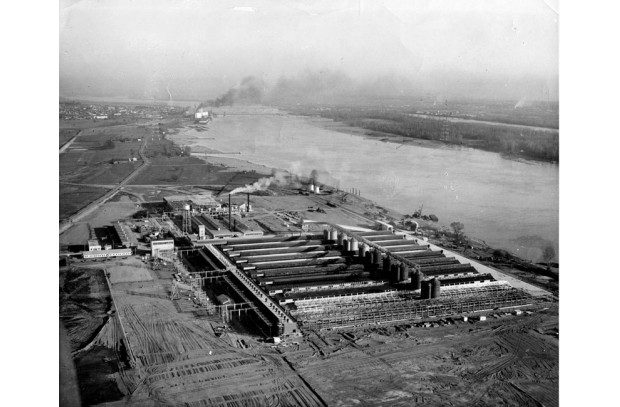Alcoa – Proof of the “Possibilities”
December, 1939 – After ten years of the Great Depression, Clark County received some very welcome economic news. The Aluminum Company of America (Alcoa) announced they would build their newest plant west of the port in the Vancouver Lake Lowlands.
Alcoa began operations in Vancouver in 1940, providing aluminum in rod, wire, cable and other forms to the world. Locally, Alcoa provided much needed, well-paying jobs for hundreds of local residents. During the 1948 Vanport Flood, the dedicated Alcoa employees made their way via chartered boat (courtesy of Alcoa) to what they called “Alcoa Island” as the smelter was surrounded by floodwaters. Employees continued to produce aluminum, and also stuffed sandbags in their successful effort to keep the plant dry.
Over time, worldwide aluminum prices dropped, and electricity costs rose. This forced Alcoa to close two of its five pot lines in 1985. Conditions worsened and in the spring of 1986, Alcoa closed its smelter after 46 years of production. Two aluminum companies, Vanalco and Evergreen Aluminum, would follow Alcoa and try to restart the plant, but they never rose to the production, or employment levels of Alcoa.
In 2008 the Port of Vancouver purchased the long-dormant smelter and surrounding buildings. Following the environmental clean up that Alcoa undertook, the port finished what is now called “Terminal 5.” Terminal 5, once home to the Alcoa plant that produced what was hailed as the “metal of the future” is now an active site ready to transport the cargo of the future.
« See all stories
